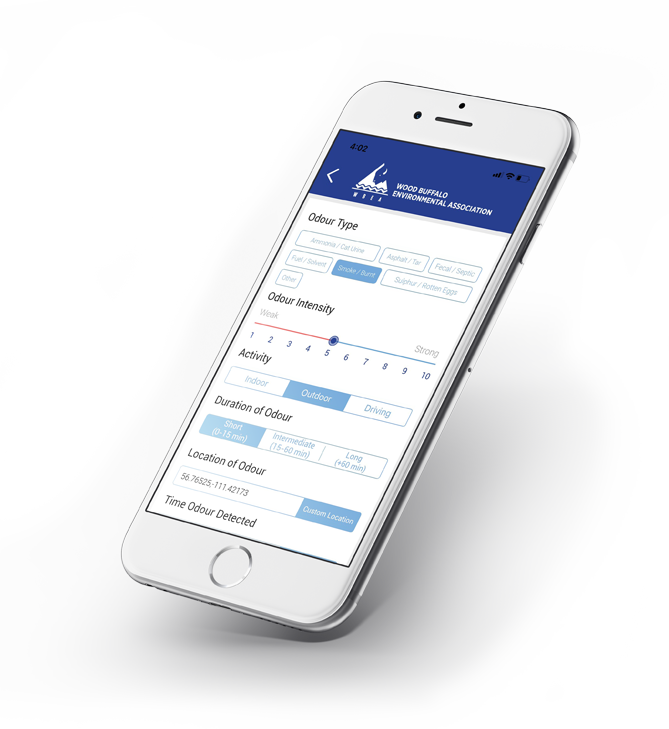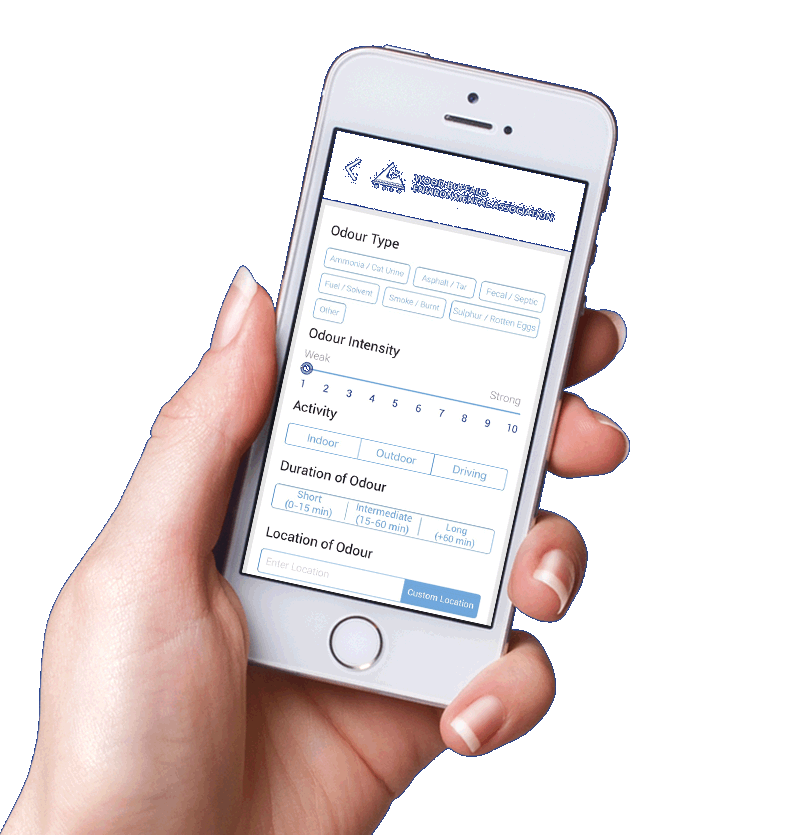
About the Community Odour Monitoring Program
The Wood Buffalo Environmental Association (WBEA) monitors the air quality in the Regional Municipality of Wood Buffalo (RMWB) 24 hours a day, 365 days a year, through a network of 29 ambient air monitoring stations. Each station contains multiple analyzers that continuously measure the concentration of different pollutants, along with meteorological parameters such as wind speed, wind direction, temperature, humidity, and atmospheric pressure.
The WBEA was approached by members of different communities in the RMWB about the odours they experienced. Currently, analyzers can measure the concentration of specific pollutants or groups of pollutants, but they cannot measure if an odour is present or how strong the odour would be.
Therefore, the WBEA created an app which allows people to directly provide information about the odours they experience. The app allows the WBEA to relate the information people provide about odours to the ambient air data collected at WBEA air monitoring stations.
About the App
The COMP app collects information about odours, including:
Odour Type
Once an odour is at a concentration high enough to be detected by an individual, the type of odour can be described. Within the COMP app there are currently seven options to describe what users smell: Ammonia/Cat Urine, Asphalt/Tar, Fecal/Septic, Fuel/Solvent, Smoke/Burnt, Sulphur/Rotten Eggs, and Other. Users select the odour type that best describes the odour they are experiencing.
Odour Intensity
The intensity of an odour is the perceived strength of the odour—it is not necessarily related to its concentration. For example, a particularly pungent odour at a low concentration may be perceived to be more intense than a less pungent substance at a higher concentration. The intensity may also depend on the individual’s sensitivity to odours.
Activity
Activity is included so that users can provide information about what they are doing when they encounter the odour; they can indicate whether they are indoors, outdoors, or driving.
Duration of Odour
Duration of odour is the length of time the user experiences the odour. This is to provide context about whether someone had a brief encounter with an odour, or experienced a long-lasting, persistent smell.
Location of Odour
It is necessary to collect the position where the user experienced the odour so that the WBEA can compare the data to the closest ambient air monitoring station. It is also used to compare multiple observations to each other if they are submitted from the same area.
Time Odour Detected
To compare odours experienced by users to the data the WBEA collects at their ambient air monitoring stations, the WBEA needs to know the date and time the user encountered the odour.
Energy & Environmental Response Reference Number (Optional)
If an odour is particularly strong and a user wants to file a report with the Alberta Government, they can call their 24-hour Energy & Environmental Response line, whose number is listed on the main page of the app. When a user files a report, they will be provided with a Reference Number. The user can enter that Reference Number into the app, to show a report was filed. It is an optional field.

What do we do with the data?
The data provided from users through the COMP app is compared to the ambient air data collected at WBEA air monitoring stations.
The intent is to find whether there are trends in the ambient data when odours are present—such as elevated concentrations of odours-causing compounds.
To see how the observations submitted in 2017-2018 were used, check out the 2018 Annual Report.


